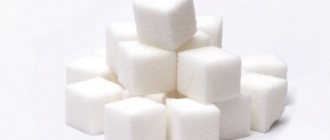One of the advantages of the 21st century is the widespread use of devices to make motherhood easier. There are so many wonderful devices to make a young mother at least a little more free and rested:
- disposable diapers;
- breast pumps;
- automatic baby bassinets, etc.
Thanks to many of these things, it is possible to maintain breastfeeding, even if the breastfeeding woman is forced to leave the baby for a long time with members of her family. She can express and leave the milk in the refrigerator so that the baby is fed in her absence.
How to warm breast milk from the refrigerator so as to preserve its pleasant taste and beneficial properties.
Expressing breast milk
It happens that after giving birth, a young mother cannot be constantly near the baby, because of this, caring for the baby falls on the shoulders of loved ones. This problem is especially relevant for mothers who, thanks to their income, provide for the maintenance of the family.
Everyone knows perfectly well how beneficial breast milk is for a baby, especially in the first months of his life. The beneficial substances contained in it protect the baby from infections, strengthening its weak immunity.
In order not to give up breastfeeding, the mother simply needs to express the milk and store it in the refrigerator. Breast milk from the refrigerator does not lose its beneficial properties. And warming up and feeding the child will not be difficult for those caring for him. Mom can pump several times a day, if there is a lot of milk, a good place to store it is the refrigerator and freezer.
But the question immediately arises of how to warm up expressed breast milk. There is nothing complicated about this; nowadays there are many ways to perform this simple task.
Amount of milk consumed by month
After birth, the baby’s appetite gradually increases, and the mother’s milk production gradually increases. Let's see how the volume of milk consumed by a child changes using the table as an example.
| Age by month | Quantity at a time, ml | Quantity per day, ml |
| 1 | 100 | 600-800 |
| 2 | 120 | 700-900 |
| 3 | 150 | 1000 |
| 4 | 150 | 1000 |
| 5 | 180-210 | 1200-1500 |
| 6 | 180-210 | 1200-1500 + complementary foods |
| 7 | 170-250 | 1000+complementary foods |
| 8 | 170-250 | 900+complementary foods |
| 9 | 170-250 | 800+complementary foods |
| 10 | 170-250 | 700+complementary foods |
| 11 | 170-250 | 600+complementary foods |
| 12 | 170-250 | 600+complementary foods |
In connection with the introduction of complementary feeding, starting from 6 months (for artificially fed children from 5 months), the size of the consumed portion of milk will gradually decrease. When feeding, the baby is first offered complementary foods, then milk. And the baby decides for himself how much nutrition he needs.
In today's world, many devices have been invented that make the life of parents easier. This includes the ability to freeze and thaw expressed breast milk. This saves time and allows the mother to separate from the baby if necessary. It is up to her to decide which of the above methods this or that family will choose. We can definitely say that everyone will find a way to properly heat milk to their liking and convenience. This article will help you figure out how to warm up breast milk.
- Related Posts
- How and where is breast milk produced?
- Why is breast milk different in color?
- How quickly breast milk burns out: causes and consequences
« Previous entry
Ways to warm breast milk.
Many people are interested in the question of how to heat milk. To do this, there are several ways to help warm breast milk in a bottle.
Method number 1. Using a bottle warmer
The simplest, but rather expensive way, is to use a pre-purchased heater in a store. This is a container specially designed for bottles, with a wire for the network and a temperature regulator.
After connecting it to the network, you need to place the bottle in a container and fill it with water to the indicated mark. Afterwards, you need to set the desired temperature using the heating control sensor.
The heater will operate in the specified mode, heating the milk bottle with warm water without overheating it. Of course, this is one of the simplest methods, because using it, the mother can completely calmly go about her business, without worrying that the milk may overheat . On average, warm-up time ranges from 3 to 10 minutes.
It should be noted that if you buy a warmer from a specific company, you must be prepared that its use can only be used with bottles from this company. If this does not suit you, choose a universal warmer that can be used with different bottles.
Method number 2. Using running water
The most accessible method is to use warm running water. To do this, you need to place a bottle of milk in a previously prepared container, which will be filled with warm water. You can use a small saucepan or ladle for this. It is advisable that after filling the container with water, the bottle should be in a vertical position.
The heating time and the temperature of the running water will depend on the temperature of the milk. If you are using frozen milk, you will need to leave the milk in the room until it thaws. Of course, this method will take longer. After this, you can place the milk under water.
The recommended water temperature is from 40 degrees, but should not exceed 45. Accordingly, it will take much longer to warm up the milk. If you use milk from the refrigerator, the water temperature can be from 37 to 42 degrees. It is important to note that while heating the milk, it is advisable to gradually increase the temperature of the running water.
Method No. 3. Using a water bath
This is a simple, but rather labor-intensive method of heating, which can take away mommy’s precious time. Heating using a water bath can be done in two ways.
For the first method, you will need a saucepan and a metal colander. Place the pan on the stove and pour water into it, placing a colander on top of it. After the water boils, reduce the heat to the optimal temperature so that the boiling process is not disturbed. Place a bottle of milk in a colander and cover the pan with a lid. With the help of steam, the milk will be heated.
For the second method of heating milk using a water bath, you will need two pans. The first pan is placed on the stove, the second is placed in the first. You need to pour water into the second pan so that it covers the bottom of the second pan and a small part of its walls. You also need to pour water into the second pan so that it covers the bottle.
After the water in the first pan boils, you can place the bottle of milk in the second. The bottle will be heated by heating water in the second pan, using boiling water in the first.
It is very difficult to say exactly how long it will take you to heat milk using this method, because it all depends on the boiling rate of the water and the material of the pans used.
If this method completely suits you, then during the first heating you need to regularly measure the temperature while heating. This will give you an idea of how long it may take you to heat up the milk.
Method number 4. Using a microwave oven
To heat milk in the microwave, just put it in the oven and turn on the heat. Of course, there is nothing complicated about this, but there are many BUTs that may force you to abandon this method.
The first is the opinions of experts about the dangers of microwave waves. Some argue that using a microwave to heat food is completely safe. Others cry that due to the effects of waves, the beneficial properties of products are lost. Therefore, there is no clear answer as to whether it is possible to heat breast milk in the microwave.
Secondly, this is uneven heating. If you use a microwave oven in your life, you are familiar with this problem. It may not be serious at first glance, but it can be harmful to milk. Indeed, if breast milk overheats, it can lose all its beneficial properties.
Storage and defrosting methods
In this case, there is no need to transfer the baby to formula, depriving him of valuable protein and enzymes contained in a product such as breast milk: it is enough to express it and place it in the refrigerator. By the way, if the mother is not absent for more than 6 hours, the expressed milk, due to its antibacterial properties, will not need to be refrigerated during this time. In this case, you only need to carefully monitor the sterility of the container into which breast milk is expressed.
When your baby gets hungry, you just need to give him a bottle without wasting time heating or cooling it. If the mother plans to be away for a longer period or simply decided to stock up on milk for future use, she will have to store it in the refrigerator. There, this natural product will remain useful for 7-8 days, and in the freezer - from 3 to 6 months, depending on the degree of freezing. To do this, it is convenient to use containers or special bags. The latter are even equipped with measuring divisions. In both cases, it is important to leave a mark on the date of pumping, so that your forgetfulness does not subsequently harm the child’s health.
There are several ways to heat breast milk while retaining all its nutritional properties, which will be discussed below. But you need to remember that deep-frozen milk must first be placed in the refrigerator and only then heated. It will take at least 8 hours for it to thaw, so in the evening you can move the container with milk from the freezer to the refrigerator so that by the morning there are no ice left in it. It is better to check this by stirring the contents with a teaspoon.
After defrosting, milk stored in the refrigerator is suitable for consumption for 5 days, but it cannot be re-frozen: in addition to losing all its beneficial properties, it can cause poisoning to a child. Therefore, a product that has been defrosted but not yet consumed must be thrown away.
FAQ
Especially for you, we have prepared answers to frequently asked questions regarding breastfeeding. A breastfeeding specialist will answer your questions.
Question: “Can breast milk be heated?”
Answer: “Of course, breast milk can be heated. If you are faced with this question, then we can conclude that you are bottle-feeding your baby with expressed milk, which should be stored in the refrigerator.”
Question: “How many times can breast milk be warmed?”
Answer: “Ideally, it is better to warm up expressed breast milk no more than once. Because due to frequent heating, it loses its beneficial properties. If you know that your baby eats less milk at one feeding than you prepared for him, then it is better to divide it into two servings. In extreme cases, the number of warm-ups can reach two times.”
Question: “Can breast milk be heated twice?”
Answer: “Breast milk can be heated twice if you have no other options. After the second heating, the milk will lose all its beneficial properties and become empty.”
Question: “How to warm breast milk correctly?”
Answer: “It is better to heat breast milk in a special heater or in a water bath; in extreme cases, you can use a microwave. It must be remembered that the ideal temperature of milk is from 36 to 37 degrees. Milk can only be heated in a bottle. It is prohibited to heat milk in a saucepan on the stove.”
Question: “Is it necessary to warm breast milk at room temperature and how to do it correctly?”
Answer: “In extremely rare cases, using milk at room temperature is possible without heating. For better absorption, the recommended temperature is from 36 to 37 degrees. Do not neglect heating breast milk. But it’s worth noting that this does not apply to the water you give your baby; it can be used without heating.”
Question: “How long can warmed breast milk be stored?”
Answer: “It is advisable to use heated milk immediately or within an hour after heating.”
Question: “My friend pumps regularly, but after heating the milk becomes sour. What can be done to ensure that milk is stored for a long time and does not spoil? What could be the problem?"
Answer: “If the milk becomes sour, it means it was expressed incorrectly! To prevent this from happening, you need to use only a clean, sterilized container. Immediately after expressing, you need to put the milk in the refrigerator.”
How to store expressed breast milk
Pay special attention to the containers in which you will store milk. This should be a sealed, sterile container made of high-quality, durable and safe material. It would be good if the container had a measuring scale, as well as a place for notes. The packaging must indicate the time and date of pumping and freezing.
For short-term storage in the refrigerator or at room temperature, a standard glass, plastic, or plastic feeding bottle can be used. Studies have proven that container material does not affect the quality and composition of breast milk. It is important that the feeding bottle is tightly and airtightly closed.
For freezing and storing breast milk in the freezer, plastic bags made of thick polyethylene are a suitable option. This is a strong and reliable package that can withstand a long shelf life at low temperatures. The bags have a convenient and airtight clasp, a measuring scale and a place to record the time and date of freezing. They do not take up much space in the refrigerator, do not require sterilization and are immediately ready for use. In addition, such bags are universal; the packaging can be stored in a regular refrigerator.
However, bags for storing breast milk are disposable, which is not very practical and economical. After each use, the container must be thrown away. If you often express and store milk, it is better to choose special containers made of high-quality food-grade plastic with a tight, airtight lid. Such containers should be thoroughly washed after use with baking soda and sterilized.
Under no circumstances use regular plastic bags for storing or freezing milk! These are fragile and non-sterile products that will simply burst when frozen.
Oil
Bringing the cooled butter to room temperature can take anywhere from 30 minutes to an hour. You can speed up this process by cutting the butter into 1-inch cubes. Place the resulting cubes in a microwave-safe bowl and place the bowl of butter in the microwave (defrost setting). Take it out every 10 seconds and look at the consistency until the product becomes soft.
If you don't have a microwave, you can place the butter cubes in a double boiler over medium-low heat for about 1 minute. An ideally softened product should be slightly cool to the touch. The butter cubes should retain their shape.
Steps
Defrosting in the refrigerator
- Place the container of breast milk in the refrigerator.
Move breast milk from the freezer to the refrigerator.
Leave the milk to melt overnight.
It will take at least 8 hours for the contents of the container to completely melt.
- Make sure the milk is completely melted. Open the container and carefully stir the contents with a teaspoon or coffee spoon. If there are still bits of ice in the milk, leave it in the refrigerator for a couple more hours or speed up defrosting by placing the container under cool or lukewarm running water.
- Store thawed milk for no more than five days.
Melted breast milk is best used immediately, but remains safe to feed your baby for up to five days if stored in the refrigerator.
- Place the container at the back of the refrigerator, where the temperature is cool enough.
Repeatedly freezing breast milk can cause lipid breakdown. The quality of the milk deteriorates and it may even spoil.
Running water
- Place the container of frozen breast milk in cool running water.
If you are warming breast milk directly from a frozen state, start by holding the container of frozen milk under cool running water.
- The water should be slightly cooler than room temperature.
It is recommended to use cool water for the initial defrosting stage because it allows the milk to warm up gradually. If you immediately place it in hot water, the contents near the walls of the container will become hot, while the milk inside will still remain frozen. It can also cause the destruction of valuable enzymes found in breast milk.
Once the milk has completely melted, slowly increase the temperature of the running water.
Warm cool breast milk under warm running water.
If you have already defrosted the milk in the refrigerator or stored it there chilled, you can not keep the container under running cool water, but immediately place it under warm water.
- Slowly increase the water temperature from warm to hot. You must stop before the water gets too hot.
Rotate the container or bottle slowly to ensure even heating of the contents.
- You can make sure the milk is heated evenly by stirring it with a teaspoon or coffee spoon.
Heating in a water bath
- Heat water in a saucepan.
Take a small saucepan, fill it halfway with water and place over medium heat. As soon as the water starts to boil, turn off the stove.
- Place breast milk in a pan of hot water.
You can place the container in the pan and swirl it slowly.
- You've already removed the pan from the hot stove, so you can safely place the glass bottle on the bottom of the container. If you are afraid that the bottle may burst, then simply hold it in hot water without touching the bottom of the dish.
In this way you can heat up both frozen and already melted milk. It only takes a few minutes to warm up cool milk. If the milk is defrosted, it will take twice as long.
- Make sure the milk is heated evenly.
Gently shake the contents of the container or bottle to even out the temperature.
- You can also achieve this by stirring the milk with a teaspoon.
Bottle warmer
- Read the instructions.
No two heater models are exactly alike, so it is important to read the instructions carefully before use.
- Although the details may vary, in general all heaters follow the same principle.
Please note that many warmers have an additional compartment for warming a second bottle, which you will use when you start giving your baby complementary foods, such as porridge.
One of the advantages of the 21st century is the widespread use of devices to make motherhood easier. There are so many wonderful devices to make a young mother at least a little more free and rested:
- disposable diapers;
- breast pumps;
- automatic baby bassinets, etc.
Thanks to many of these things, it is possible to maintain breastfeeding, even if the breastfeeding woman is forced to leave the baby for a long time with members of her family. She can express and leave the milk in the refrigerator so that the baby is fed in her absence.
How to warm breast milk from the refrigerator so as to preserve its pleasant taste and beneficial properties.
The skill of expressing breast milk is important for a nursing woman. It allows you not only to prepare a supply of food for the baby, but also to control the filling of the breast. The ability to empty the breast in the first months after childbirth is irreplaceable, since it is during the period of lactation that the risk of milk stagnation is high.
If the mammary gland is not emptied in a timely manner, the woman’s temperature will rise, inflammation will begin, and an infection may develop, which will require surgical intervention.
Manual expression is the most effective method. Lifting your breast slightly with one hand, use the index finger and thumb of your other hand to gently press on the opposite edges of the nipple areola. When performed correctly, the manipulation is completely painless, even with cracked nipples.
You can also use a breast pump. The devices are widely available in pharmacies in any price category: from the simplest with a manual bulb to electric ones. An automatic electric breast pump is the most effective. However, using any model can be painful if you have cracked nipples. It happens that there is uneven emptying of the mammary gland when using a breast pump.
If you express milk into any container and you are going to bottle-feed your baby, you must strictly adhere to the rules of hygiene:
- wash your hands with soap before pumping;
- You should not lather the mammary gland, as this removes from the surface of the nipple the normal microflora of the skin of a healthy person, which is intended to reach the baby along with breast milk; It is enough to rinse your breasts with clean water;
- all pumping accessories must not only be thoroughly washed and dried, but also sterilized after each use; to do this, you need to boil them for half an hour or use a special sterilizer;
- the younger the child, the smaller the portions of expressed milk in the storage container should be; for a baby 2 months – approximately 80 ml, 3 months – 100 ml.
Breastfed babies tend to eat smaller portions than formula-fed babies. This is due to the fact that breast milk is digested faster than formula, and the baby can be attached to the breast even more often than once every two hours.
The best product for feeding a newborn is breast milk. It is perfectly digestible, and its composition is most suitable for a particular child. However, there are situations when a mother cannot be with her baby all day or she urgently needs to undergo a course of treatment that can harm the newborn. In this case, you can stock up on milk and store it chilled or frozen. Young mothers immediately have a question about how to warm up breast milk from the refrigerator.
Basic mistakes
We all know that boiled milk lasts longer and is harmless to children (sterile and does not contain bacteria). If you keep the pumping container sterile, storage for at least 4 hours is guaranteed. But boiling kills all the beneficial properties, changes the structure of the protein, and impairs its digestibility.
Many people are scared by the appearance of stored expressed milk. If it separates or changes color, you need to shake the bottle and mix the layers before use. A bluish color and a watery, sweet taste are normal. But if the color is gray, the product is spoiled and cannot be used to feed a child.
It is inconvenient to store milk in large volumes. Using special sterile bags and containers with the required single portion is much more convenient. Once the milk is heated, it cannot be stored again.
Many grandmothers claim that hind milk, which mothers usually express for storage, is very fatty. And it is better to dilute it with boiling water. This is not a true statement; boiling water will destroy the structure of the protein. The milk is not so fatty as to cause discomfort to the baby.
Heater
A bottle warmer will help warm up breast milk without losing its beneficial properties.
Agree, the first two methods of heating cold milk cannot be called quick. For those parents who often have to warm up expressed milk from the refrigerator and who often resort to night feeding, it is recommended to purchase a special bottle warmer. This is also convenient if you have more than one baby on your hands, but, for example, twins - you can heat several bottles at once in the heater.
Bottle warmers come in different types. Some of them work on the same principle as a water bath, others use steam to heat them. You can prepare both types of devices in advance by filling them with hot water. Next, proceed according to the instructions.
- In a water bath heater, you simply place a bottle of cold milk directly into hot water.
- In steam heaters, a container of milk is placed in an empty compartment, into which steam begins to flow from an adjacent insulated compartment filled with hot water.
What is the advantage of this method over those described earlier? The fact is that the heaters act carefully, heating the milk evenly. A good heater can heat milk after refrigeration in two to three minutes.











